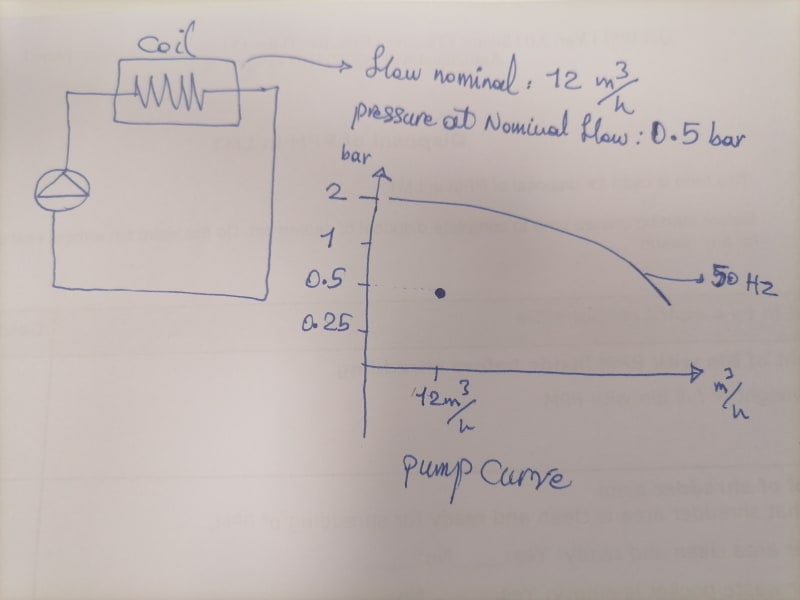The "compromise point" is called the "operating point" and is always found somewhere on the pump curve.
That pump will give you about 2barg pressure at a flow rate of 12 m3/h
Find your flow rate and move up on the graph until you hit the curve. That's what the pump wants to do at 12 m3/h. 2 barg.
But that's only half the problem solved. The coil and piping system also have a curve. You must construct that curve. Start with a pressure of 2 bars at the pip/pump discharge and find the flow rate that will pass through the pipe and coil. If that flow rate is 20 m3/h, the pump will try to give you 20m3/h, but the pressure will drop to 0.5 barg. Find the flow through the equipment at 0.5 barg. If it is less than 20 m3/h, Say 15 m3/h, than that's the new flow. Check the pump pressure at 15m3/h. Maybe that's 1.5 barg. Check the pipe and coil again at 1.5 barg. If 15 m3/h will pass through at 1.5 barg, then that will be the operating point. You're done. If not, keep on going back and forth, pump and system, system and pump until you find out where pump pressure and flow equals the flow and pressure in the system. That's the operating point.
You can do it all at the same time. Start a list of system inlet pressure and system flow values.
From pressure 0 to 2 bars, incrementing by 0.25 barg each line. At 0 pressure, you have 0 flow through the system. At 0.25 barg you might have 5m3/h flow through the pipe and coil. At 0.5 barg, maybe you have 10 m3/h flow. .... at 1.5 barg, maybe you have 15 m3/h flow. At 2 barg, maybe 20 m3/h goes through the system. Now plot that list on the pump curve graph. Where the two curves cross is the operating point.
If they don't cross, you must find a different pump, or run it faster, etc.
A black swan to a turkey is a white swan to the butcher ... and to Boeing.

